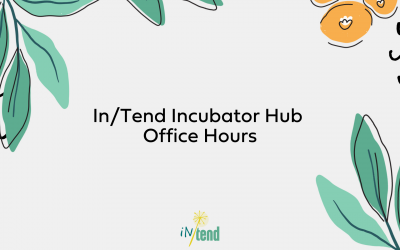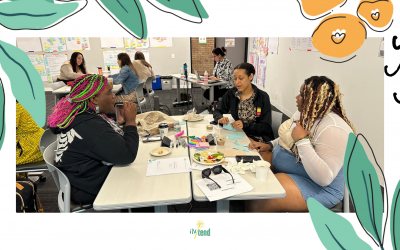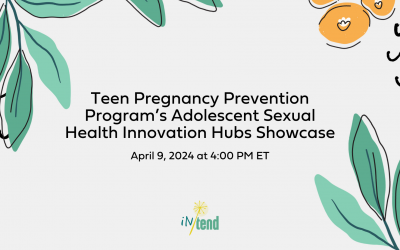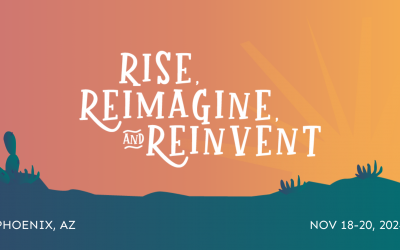
The road to developing, sustaining, and scaling up your product is a bumpy one. That’s why I’m sharing some lessons I’ve learned along the way to help you navigate your tech development process.

By Genevieve Martínez García, PhD
August 5, 2021
We’ve all been there, thinking about the perfect app, website, chat bot, or digital campaign that can address a critical sexual health issue in the population we serve. If you’ve rolled up your sleeves and are developing a product right now, talking to the end user, or developing prototypes, kudos to you! However, the road to developing, sustaining, and scaling up your product is a bumpy one. I hope these top 5 nuggets of wisdom help you navigate your tech development process. So let’s buckle up!
1. Prevent funder-constrained evolution.
Good products evolve with time, some faster than others, but they all need to change to accommodate users’ requests, stay fresh and relevant, and keep people coming back. Products that don’t evolve become stale and lose their “stickiness.” However, the ability to evolve is often determined at the conception stage.
Try to advocate to keep the development process open and fluid to authentically respond to the end user needs and wants.
Funders typically dictate or strongly suggest what they will and will not fund. Perhaps they layout specific criteria that determines the shape, look, and functionality of the product. Others expect innovators to lay out a detailed plan on what exactly will be developed. This is what I call “funder-constrained evolution,” when the final product and future iterations is constrained by the funding requirements in a way that the product responds to funders’ wants, rather than the end user’s needs.
I know it is difficult, but try to advocate to keep the development process open and fluid to authentically respond to the end user needs and wants. This responsiveness will increase the likelihood that your product will become sticky with your users rather than facing Ted Allen’s chop board.
2. Cruise your product’s identity crisis.
Raise your hand if you have proudly presented a newly developed product for population X, and people ask you about population Y, or if you developed a product to tackle issue A, but people ask you why you did not also include issue B.
As a health behavioralist, I believe in strategic and targeted messages in order to elicit changes in behavior. If we strive to be relevant and significant to all and tackle all issues, we will reach no one, and our message will be so diluted that it will not be heard. However, sometimes powerful forces may require us to expand the initial scope of our product or to tackle a different customer base we did not originally envisioned.
Consider, for example, when a funder offers good money to integrate new content into your product that responds to their needs, but the new content may not be fully aligned with your product’s mission. It is very tempting to make these accommodations to keep the lights on, even if we risk deviating from the product’s authentic self. We then end up with a product mosaic with a few pieces that don’t quite fit together. This is what I call an identity crisis.
To clarify, products should evolve and the customer profile can be expanded, but these iterations should be generated through end-user preferences and not through skeptics’ feedback.
For example, your user base may start demanding expanded content, or perhaps your product started to appeal to a new user base that has different needs. Then you can accommodate an iteration of content, features, or formats to accommodate the demands of the new customer base. This is what will keep your product fresh and relevant.
3. Reassess how, what, and if to evaluate.
We live in a world where we love science, and we want to provide our youth and professionals only with evidence-based products. But when we think about digital products—these living, breathing, always evolving things—it is hard to evaluate them in a way to build evidence and obtain the coveted “evidence-based” stamp of approval.
Subjecting our products to the gold standard of research through a randomized- controlled study, or perhaps a quasi-experimental study, may end up hurting the product and our budget. These evaluations come with a high price tag, needs a lot of time for planning and implementation, and could potentially harm the product if your product needs to be frozen in time to properly evaluate behavioral impact.
So how can we evaluate and use data to talk about our product? We first start with KPIs, those key performance indicators that will tell us if the product is successful. We can assess number of users, time spent on our product, shares, engagement with social media products, or if users took some action, like booking an appointment or making a purchase (aka, conversion).
These KPI’s are strong reflection of the foot traffic and engagement of our product and are a great place to start to get a sense if our product is well received and to get an insight on marketing strategies. We can even include satisfaction and “conversion” surveys within the app’s experience.
You may be asking, what about products that have an RCT under their belt? Some product do, and some have continued to evolve (e.g., Bedsider) to successfully meet the needs of the users. Although these new versions could very well be effective, these versions were not the same that were tested in an RCT, and can frowned upon by orthodox researchers.
4. K-ching your product.
Psst…here’s a little secret: making money is not a bad thing, particularly when it can support a very good thing. Your product may not reach Facebook’s profitability level, but you should strive to sustain your product so you can, one, keep the lights on at the minimum, and two, ideally scale up, and take over the world! (Well, to some extent).
However, most digital products we develop may not have a clear fit in the market outside the scope of a project; they are tied to federal funds making monetization tricky, or are not set up in a way where monetization is feasible. On top of that, when we develop products as part of a funded project, there’s usually no support in keeping the product alive once the project closes its books. No money to pay for domain, hosting, or for social media pushes, and definitely not for all the staff time that goes into keeping it breathing and kicking.
Not surprisingly, a lot of good products die a fast or slow death soon after the project ends. But it doesn’t have to be this way. Products can be monetized in a variety of ways including white labeling the content so it can be reused by others, white labeling the platform so others can insert their brilliant content, selling professional services (think workshops and technical assistance), or connecting with social impact investors who can make larger investments tied to performance and impact. Findings ways to get some money flowing, can increase the chances of keeping it alive for the long haul.
5. Plan your exit strategy.
Yep, all good thing must come to an end sometimes. It is an amazing thing when our products can grow, iterate, and continuously meet the needs of users looking fresh and relevant. If you feel your product, campaign, or website is not meeting the needs of the users, that it’s time has passed, and that its initial purpose is no longer relevant, don’t be afraid to just let it go.
Clinging to an obsolete product is no different from hanging on to the idea of that ol’ high school crush. Yes, the future looked bright in your head, but it’s just not going to work. Let it go.
There’s no shame in pulling the plug on products after they run their course. But don’t despair, there’s plenty to do with that extra time in your hands. For starters, document your lessons learned. Your experience and wealth of information can serve many others who are starting their own initiatives. Secondly, start planning a new initiative of your own; I’m sure you have no shortage of great ideas. Check-in with your end users, gather their insights, and get designing!
Genevieve Martínez-García, PhD, was previously employed with Healthy Teen Network as the Director of Innovation and Research.




















